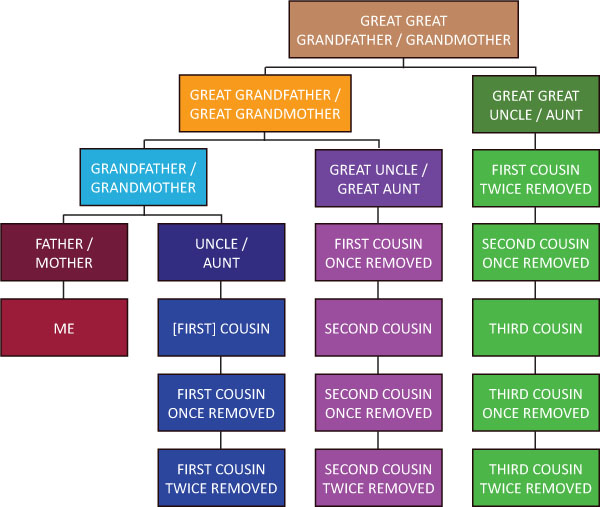Is your second cousin once removed the child of your first cousin twice removed?
Are you confused by the phrase “second cousin once removed”, and wonder how its different from “first cousin twice removed”? I’ve always wondered how the cousin system works but it’s another one of those things I haven’t got round to. Enter the wonderful world of the web.
Actually, it’s quite simple. As my complicated chart below shows. If you wish to determine what type of cousin another family member is to you, find the closest common ancestor. Count the number of generations that you and your cousin are from your ancestor. If you are the same number of generations away from your ancestor as your cousin, then you are first, second etc. cousins, where the number is one less than the number of generations that you and your cousin are from the ancestor.

As an example, if your nearest common ancestor is your great great grandfather, four generations away, then you are third cousins.
It gets a bit more complicated when your cousin is a different number of generations from the ancestor. Then, the relation is based on the nearer of you and your cousin from the ancestor. Additionally, your cousin is said to be “removed” by the number of generations he / she is away from your own generation.
For example, your second cousin’s father is your first cousin once removed, because he is only two generations away from your common ancestors, your great grandparents, but he is “removed” by one from your generation.
You’ll notice in the chart that each relational name is used twice. Your father’s cousin is your first cousin once removed; but so is your cousin’s child. There are ways of disambiguating these relationships if you really want to.
So now you know.